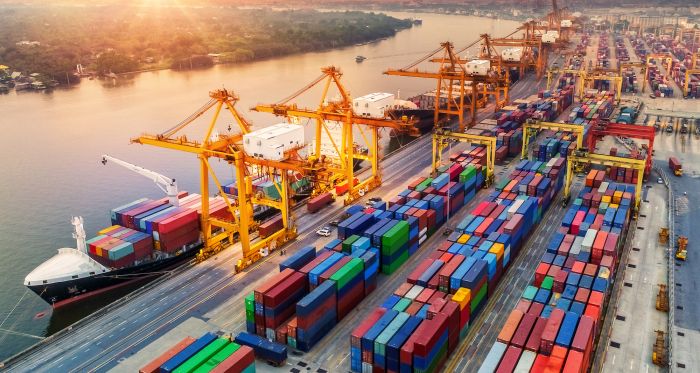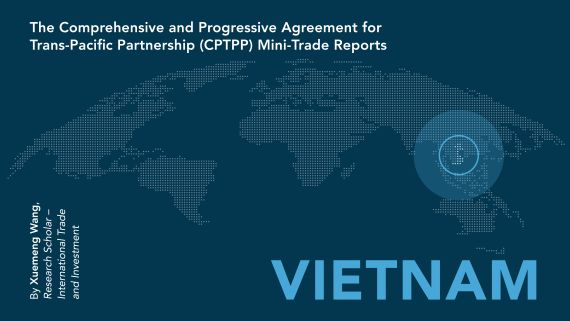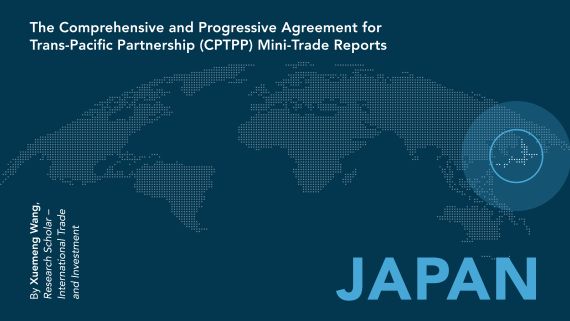It didn’t take long for Canadian importers and exporters to see big wins in Asia via the CPTPP – a mere two months.
Just-released trade numbers from Canada’s partners in the Comprehensive and Progressive Agreement for Trans-Pacific Partnership (CPTPP) reveal a tale of deep interest in each other’s economies, and with the dollars to back it up. And while Canada has already begun seeing benefits from the massive trade deal bridging economies in the Americas and the Asia Pacific, the United States is starting to feel the impacts of backing out of the new trade bloc.
The import story . . .
On the imports side, Vietnam announced last month that the value of its exports to Canada has grown significantly since the 11-member deal came into play at the end of last year. In the first two months of 2019, Vietnam exported nearly C$700 million in goods to Canada, an increase of 37 per cent year-on-year, according to the Department of Multilateral Trade Policy of Vietnam’s Ministry of Industry and Trade (MoIT). This C$200 million in additional Vietnamese exports to Canada represents new and cost-competitive opportunities for Canadian importers and consumers: new because some of the exports Vietnam hopes to see enter Canada include fruits and seafood specific to the region, products that don’t currently have much of a presence in Canada; cost-competitive because Canadians could receive some cheaper priced goods, including from low value-added textiles and apparel manufacturing.
Meanwhile, Bui Tuan Hoan, an official from Vietnam’s European-American Market Department, said demand for Asian food has been rising in Canada due to demographic changes, and that Vietnamese fruits could thrive in the Canadian market if exporters pay due attention to improving preservation and transport processes. Along with two traditional products – frozen shrimp and basa fish (a type of catfish) – that have gained a strong foothold in the Canadian market, Hoan said shipping processed seafood and top-quality products like tuna, cuttlefish, and octopus is an avenue well worth further exploration.
Ngo Chung Khanh, Deputy Director of MoIT’s Multilateral Trade Policy Department, added that 219 certificates of origin – documents widely used in international trade transactions attesting that a listed product has met certain criteria to be considered as originating in a particular country – were issued to Canada during the first two months of 2019, 81 per cent of the total issued by Vietnam. This high rate demonstrates that Vietnamese exporters are utilizing the CPTPP to penetrate Canada, one of the three CPTTP countries that Vietnam had not previously signed a bilateral free trade agreement with.
The export story . . .
For Canadian exporters, the first two months of the CPTPP have provided improved market access for Canadian beef, with Canada leveraging its high-quality beef with growing consumer demand in the region. In fact, Canadian beef producers have been among the biggest beneficiaries of the increased market access provided by the CPTPP: in the first two months of 2019, Canada saw a whopping 345 per cent increase in beef exports to Japan compared to the same time period in 2018, according to Japanese data released at the end of March.
Canada’s win on beef is bad news for producers in the U.S. With New Zealand’s additional 133 per cent growth in total beef exports for the same January-to-February period, Japan’s total beef imports from all partners shot up 25 per cent, driven by a 51 per cent surge in the country’s frozen beef imports. As a result, Japan’s frozen beef safeguard, a measure designed to automatically raise taxes on imported beef if import volumes surpass a certain threshold, is on the edge of being triggered. This mechanism would impact imports from the U.S., raising its tariff from the current 39 per cent to 50 per cent for a year. While the U.S. would take this hit, CPTPP members would be unaffected, as their tariff for entering Japan would remain at 27 per cent, placing the tariff burden solely at the feet of the U.S. and hitting its agricultural competitiveness hard.
The good-news story goes beyond beef, with CPTPP member state Japan’s companies already laying the groundwork for future gas exports, including via Mitsubishi’s 15 per cent stake in the C$40-billion LNG Canada project. This C$6-billion injection from Japan is part of the single largest private sector investment in Canadian history, and beat the previous record for Japanese investment into Canadian energy, 2012’s C$3.2 billion into natural gas in northeast British Columbia, as recorded by the APF Canada Investment Monitor.
Japan is also a vital springboard for Canada into other rapidly expanding Asia Pacific economies, and is a source for high-tech and investment critical to Canada’s industrial future.
The way forward . . .
But Canada cannot rest on its CPTPP laurels for too long: back on the subject of beef, CPTPP partner Australia also looks likely to capitalize on new export opportunities as a drop in tariffs on refrigerated goods will make Australia’s beef cheaper and more competitive in supermarkets in Asian CPTPP signatories. Beyond meat, signs of tectonic shifts have appeared in the trade landscape. The CPTPP will triple Japan’s import quotas for Australian rice this month to 6,000 metric tonnes – a matter of great interest to both Japan’s restaurant industry, as Aussie grain sells for around 30 per cent to 50 per cent less than its domestic-grown rice, and to Canada’s nascent efforts to export more brown rice into Asian economies, as Canadian exporters may find themselves quickly crowded out of new markets.
Other trade agreements are having an impact, too. Returning to Vietnam, Vietnam’s government reported last week that Russia surpassed Canada to become Vietnam’s largest source of wheat to Vietnam in 2018 because Russia has enjoyed the competitive price benefits from its free trade agreement with Vietnam.
Canada will also need to tackle balancing its opportunities from trade with commitments to “promote, monitor, and enforce labour standards in CPTPP partner countries” as set out in Budget 2019.
Additionally, Canada’s CPTPP gains have come at a time when Canada’s market gains against the U.S. in another Asian economy have hit a rough patch and may potentially dissipate. In the case of China, some economists have cautioned that Canada’s meteoric 60 per cent increase in commodity exports to China over the last couple of years – at the expense of U.S. exporters – may soon normalize. China’s ongoing diplomatic spat with Canada, and the eventual close of its trade war with the United States, could severely hamper Canadian exporters’ advantages against their southern neighbours.
Canada, and Canada’s trade partners, have clearly begun to capitalize on the advantages presented by the CPTPP – with strong success stories already presenting themselves. The CPTPP has opened not only doors to mitigate Canada’s current woes in the ever-changing world of trade, but also doors to new opportunities for sustained wins across the Pacific.





